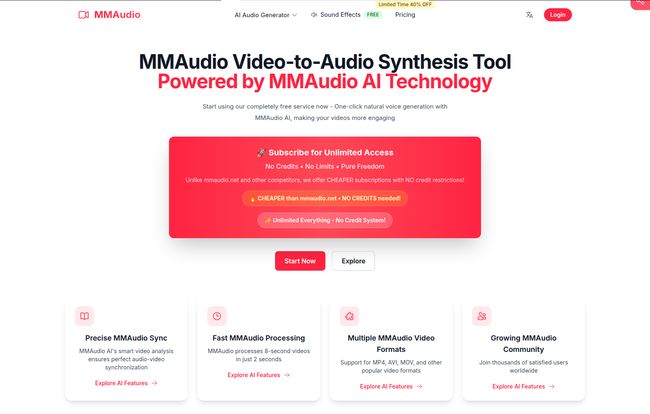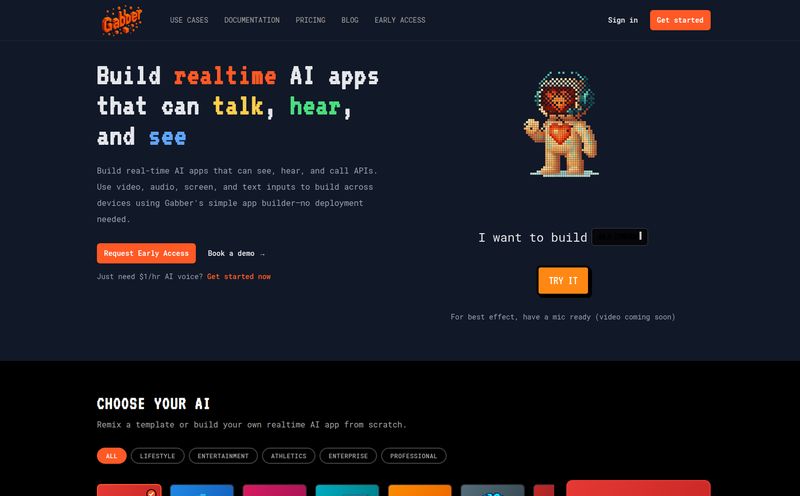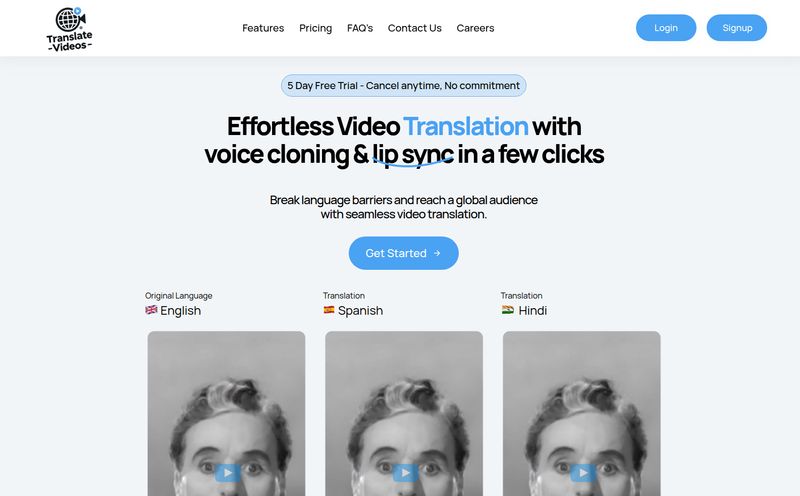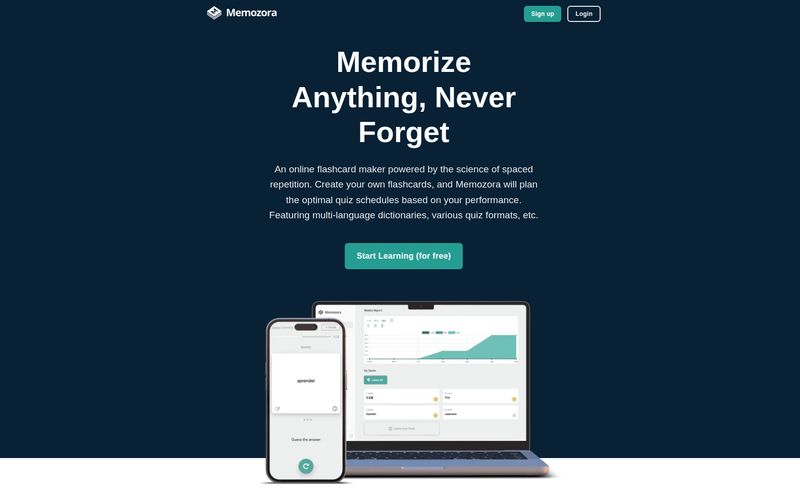Let’s have a little heart-to-heart. If you’re a content creator, a marketer, or anyone who’s ever had to produce a video, you know the pain of the voiceover. You can either spend hours coaching a voice actor (and paying their invoice), or you can face the cold, hard truth of your own voice played back to you, sounding… well, not quite like the booming narrator you imagined. It’s a process.
For years, I’ve been riding the wave of AI tools that promise to solve this. And many of them are fantastic! The tech has gotten scarily good. But they almost all share a common, soul-crushing feature: the credit system. You know the drill. You get a bucket of credits for your monthly fee, and every word, every generation, every little tweak eats those credits. It feels less like a creative tool and more like an arcade machine designed to hoover up your tokens. You find yourself rationing words, afraid to experiment, because you might run out of juice right before a deadline.
So, when I stumbled upon a tool called MMAudio, my inner cynic was on high alert. But one thing on their homepage jumped out and slapped me in the face: “Unlimited Usage with Subscription Plans… No Credits System!”
Wait, what? Unlimited? Like, a buffet where I don’t have to feel guilty about going back for a third plate of AI-generated narration? I had to see if this was for real.
So What Exactly is MMAudio, Anyway?
At its core, MMAudio is an AI tool built for one primary purpose: to put a high-quality, natural-sounding voiceover onto your video content. It’s designed to be a straightforward video-to-audio synthesis platform. You give it a video, you give it some text, and it marries the two together with what it calls “Smart AI synchronization.”
But it's also a double-agent. It has a dedicated Text-to-Audio function, so you can generate audio files from a script without needing a video at all. This is handy for podcasts, audio snippets for social media, or just testing out a voice before you commit it to a big video project.
What I find interesting is that they mention it’s all built on open-source AI technology. As a tech nerd, this makes me nod in appreciation. It suggests they're not trying to reinvent the wheel from scratch in a secret lab. Instead, they’re likely standing on the shoulders of giants, using powerful, community-vetted models and focusing their energy on making the user experience and the final output as smooth as possible. It’s a smart way to build a tool in 2024.
The MMAudio Workflow Is Deceptively Simple
Getting started is, thankfully, not a 30-step process that requires a PhD in audio engineering. The website lays it out pretty clearly, and my own experience confirmed it. It boils down to a few simple stages:
- Upload Your Video: You start by uploading your video file. Pretty standard stuff.
- Select Your Voice: This is where you pick the AI voice that fits your brand or project.
- Add the Audio (via Text): You paste in your script. The AI then gets to work generating the voiceover.
- Optimize and Generate: The tool syncs the new audio to your video, and you get a final, dubbed video file.
The whole interface for this process is clean. You’ve got your main tabs: Extract Audio, Video to Audio, and Text to Audio. You drop your file or paste your text on the left, and the magic happens on the right. No-fuss. No muss. It’s a workflow that respects your time.

Visit MMAudio
The Features That Actually Matter to Creators
A long list of features is one thing, but what actually makes a difference in your day-to-day grind? For me, it comes down to a few key things that MMAudio seems to understand.
The “No Credits” Subscription Model is a Game Changer
I’m coming back to this because it's just that important. The subscription model is the headline act. The psychological shift from “I have 8,347 characters left this month” to “I can generate as much as I want” is massive. It encourages experimentation. You can try out five different voices for a project. You can re-generate a paragraph 10 times to get the inflection just right. You can create a throwaway test video just for fun.
This freedom is what separates a utility from a true creative partner. With credit-based systems, I always feel like the clock is ticking. With MMAudio's model, it feels like I’ve booked the studio for the whole day.
Voice Quality and Smart Synchronization
An unlimited tool is useless if the output sounds like a robot from a 1980s sci-fi movie. Luckily, we’re past that era. The voices on MMAudio are genuinely good. They have that natural cadence and subtle emotional coloring that makes them believable. Are they going to fool a trained audio engineer 100% of the time? Maybe not. But will they fool 99% of your audience on YouTube or TikTok? Absolutely.
The bigger challenge for tools like this is the sync. We’ve all seen those poorly dubbed foreign films where the lips are moving but the words come out a second later. It’s jarring. MMAudio's promise of “precise audio-video synchronization” is a tall order, but from the user examples I've seen, it holds up surprisingly well. The timing seems tight, which is critical for maintaining professionalism.
Let's Talk Money: MMAudio Pricing Explained
Okay, so “unlimited” usually comes with a price tag. MMAudio is refreshingly transparent about this. There appears to be a free service to get your feet wet, but the real power is in the paid subscriptions. Here’s a quick breakdown of their annual plans:
| Plan | Monthly Cost (Billed Annually) | Annual Total |
|---|---|---|
| Starter | $8.33 | $99.90 |
| Professional | $24.99 | $299.90 |
| Enterprise | $41.66 | $499.90 |
Now, seeing a yearly price might cause a little sticker shock for some. But do the math. If you’re a serious creator, compare that $99.90 for a year of unlimited Starter access to what you'd spend on a credit-based system. On many platforms, that might only get you a few hours of generated audio. Here, you get a whole year. For agencies or small businesses, the Professional plan is a no-brainer for churning out marketing content.
The Good, The Bad, and The AI-Generated
No tool is perfect. Let’s be real. Based on the info available and my experience in this space, here’s my honest take.
What’s to love is pretty obvious: the professional voices, the fast processing, and that glorious, glorious unlimited model. The support for multiple video formats like MP4, AVI, and MOV is a nice, practical touch. But the real potential is seen in the wild. A quick look at their user feedback shows people doing everything from dubbing Japanese anime to creating slick montages for their video games. This isn't just a corporate tool; it's a creative playground.
On the flip side, there are some limitations to keep in mind. The cons mention video file size limitations which can vary by plan. If you're shooting in 8K RAW, you might need to compress your files before uploading. They also note some limitations with specialized sound effects, so it’s more of a voice tool than a full-blown sound design suite. And, of course, the most advanced features are locked behind that subscription. But honestly, that’s fair. You get what you pay for, and the free service is there to prove the concept.
Who Is This Really For?
I see a few groups getting a ton of value out of a tool like MMAudio:
- YouTubers & Faceless Channel Creators: This is the most obvious one. If your channel relies on narration over b-roll or screen recordings, this is your new best friend. It allows you to maintain a consistent, professional sound without ever turning on a microphone.
- Marketing Teams: Need to A/B test a video ad with a male voice versus a female voice? Or maybe create versions for different regions? This makes it fast and cheap to iterate.
- Educators and Course Creators: You can turn dry presentation slides into engaging video lessons with a clear, easy-to-understand narrator.
- Indie Game Devs and Animators: As the user feedback shows, it's being used for creative projects to add placeholder or even final voice lines to characters and scenes.
My Final Verdict on MMAudio
Is MMAudio the undisputed king of all AI voice tools? The space is too crowded and moving too fast to make a call like that. But does it present one of the most compelling value propositions I’ve seen in a long time? Absolutely.
It solves the single biggest headache I have with its competitors: the restrictive credit system. By moving to a simple, unlimited subscription model, MMAudio shifts the focus back to creativity and away from accounting. It’s a solid tool with high-quality output that’s perfect for the vast majority of online video content. It's not without its minor limitations, but for the price, it’s an absolute powerhouse.
If you've been on the fence about AI voiceovers because of the cost or the complexity, this might be the one that finally gets you to jump in.
Frequently Asked Questions
- Is MMAudio really free to use?
- Yes, it offers a free service, which is a great way to test its capabilities. However, for unlimited usage, more advanced voices, and larger projects, you’ll want to look at one of their paid subscription plans.
- How natural do the AI voices actually sound?
- They are surprisingly natural and have come a long way from the robotic voices of the past. They handle pacing and inflection well. For the best results, I always suggest listening to their samples and testing a short script of your own on the free plan to see if it fits your style.
- Can I use audio from MMAudio for my commercial YouTube channel?
- Yes, the paid plans are specifically designed for creators and businesses to use in commercial projects. This includes monetized videos, advertisements, and other professional content.
- What makes MMAudio different from tools like ElevenLabs or Murf.ai?
- The main differentiator is the business model. While many competitors use a per-word or per-character credit system, MMAudio’s paid plans offer unlimited audio generation. This can be significantly more cost-effective for prolific content creators.
- Does MMAudio support different languages or accents?
- The platform is built on powerful AI that is constantly being updated. For the most current list of supported languages, voices, and accents, it's best to check their official website directly as these features are often expanded.
- What video formats does MMAudio support?
- It supports all the common video formats you'd expect, including MP4, AVI, and MOV, making it compatible with most video editing workflows.
Conclusion
The world of content creation is all about lowering barriers. What once required a studio and a huge budget can now be done from a laptop. Tools like MMAudio are the next logical step in that evolution. They're not just cool pieces of technology; they are democratizing tools that put the power of professional audio into the hands of anyone with an idea. By removing the financial and psychological burden of credit-based systems, MMAudio isn’t just offering a service—it’s offering creative freedom. And in my book, that’s worth a lot.
Reference and Sources
- MMAudio Official Website
- MMAudio Pricing Page
- ElevenLabs (Example of a popular credit-based AI voice tool)



